Ice diatoms!
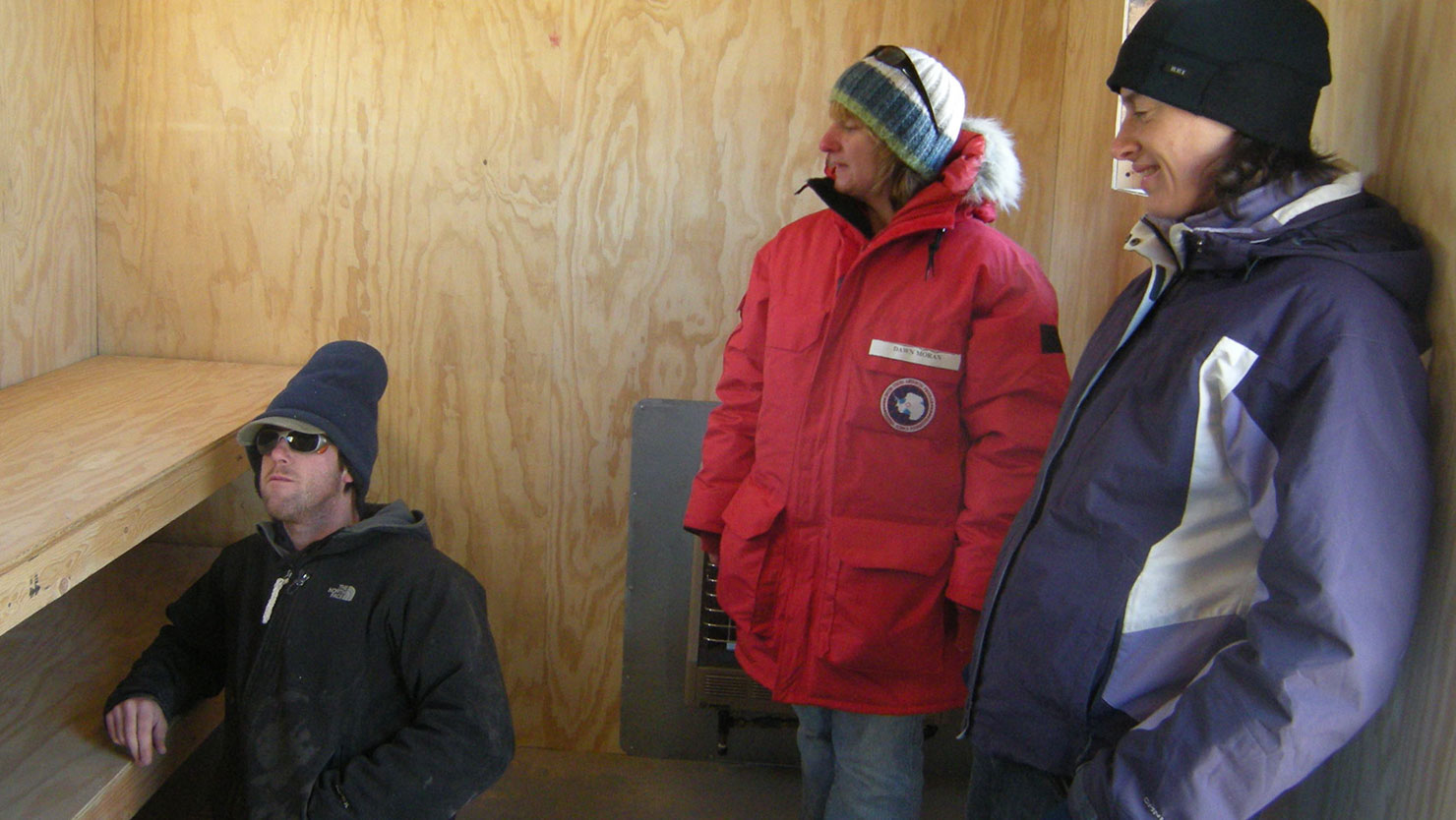
Today has been a day of preparations, as tomorrow we hope to leave McMurdo Station and head out on the sea ice. Our mobile sled is almost ready for deployment: the carpenters who work for the US Antarctic Program are quite amazing, and our sled has filtration racks for separating different sizes of plankton, incubation chambers, and a mobile clean room for trace metal analyses. All of this in a 6 x 12 foot space! I'll have more photographs in the posts to come, but it very much a sled of the 21st century.
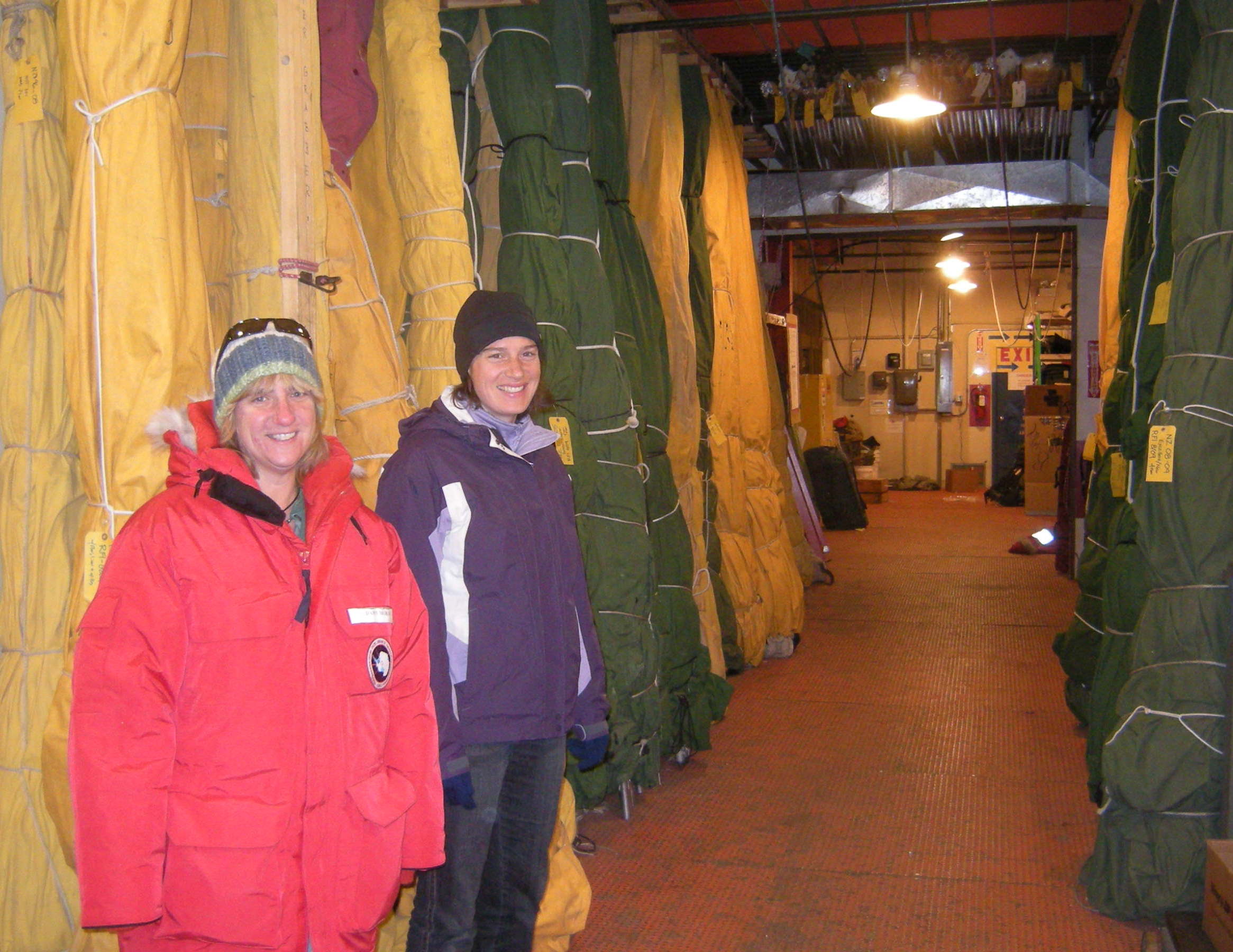
We are also assembling our equipment list for camping on the ice, and the list is impressive: tents, coleman stoves, fuel, kitchen boxes, ice screws, shovels, jerry cans, carabiners, spare sleds, and a hurdy gurdy. Don't ask me what that last thing is, I've been told it is a 'fuel transfer unrelated to the musical instrument. The place to get all of these items is the Berg Field Center, which is a storehouse of mountaineering and back-country equipment available to all scientists doing Antarctic field work. For someone who likes mountaineering as much as I do, visiting the Berg Field Center is like letting loose a kid in a candy store - the place just oozes exploration.
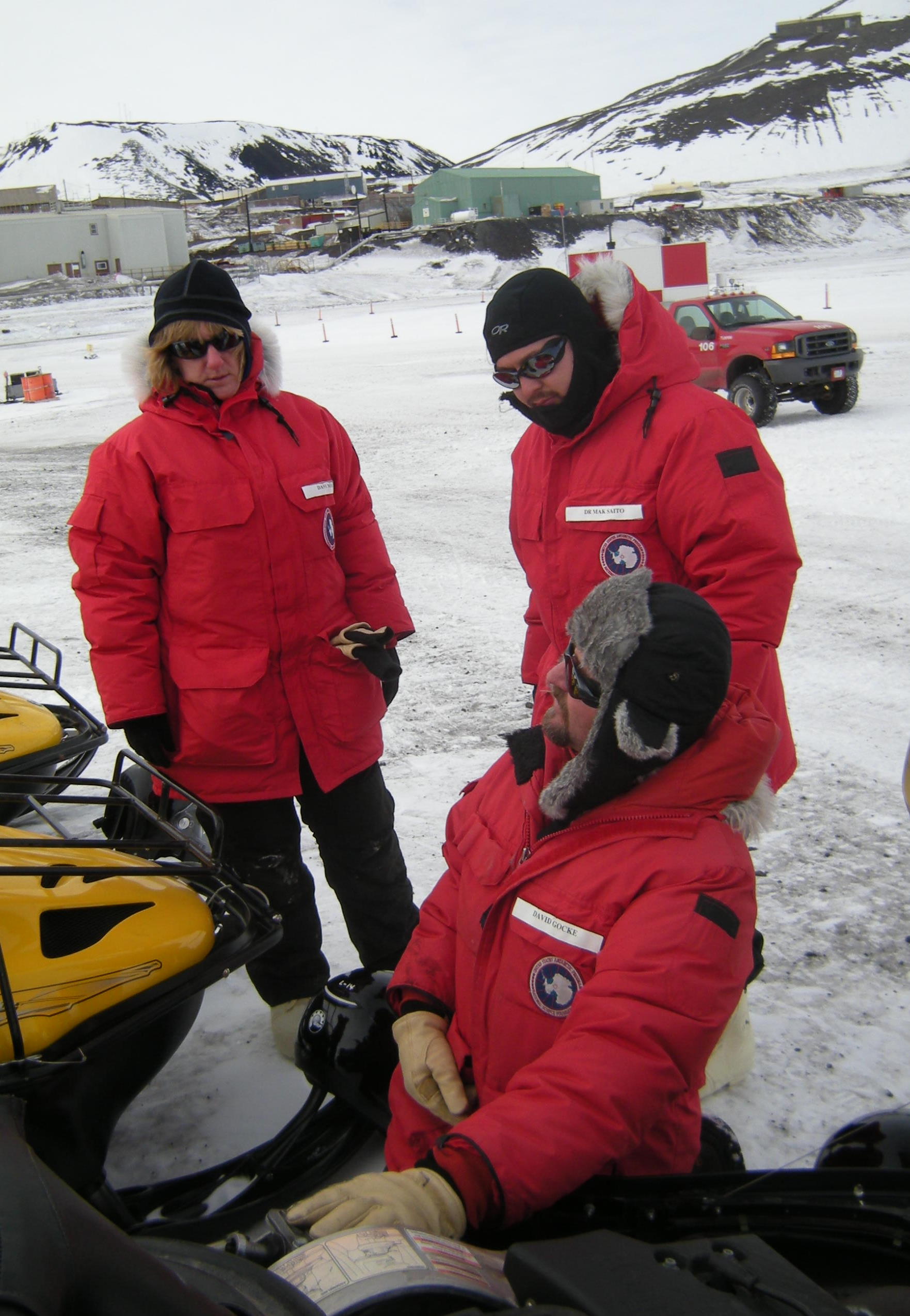
In the afternoon our group attended a class on snowmobiles use and maintenance. Our research sled will be pulled by a Tucker Sno-Cat, and our lighter open-air equipment sleigh will be pulled by a Pisten Bully. Both of these machines are major workhorses in and around Antarctica, but they are slow: the Pisten Bully moves along at 6 mph. So for added flexibility we decided to bring along a pair of snowmobiles. With snowmobiles, we will be able to ride ahead and scout for hazard on the ice, as well as run back to McMurdo to pick up extra equipment or drop off samples. Driving a snowmobile is similar to riding a motorcycle, although the snowmobile doesn't have any real gears, and snowmobiles reek of partially burned fuel (dirty two-stroke engines). As part of our training we ran a mogul course, and learned how to ride on ice and on slopes, and now I understand we are all certified 'snow machine technicians'.
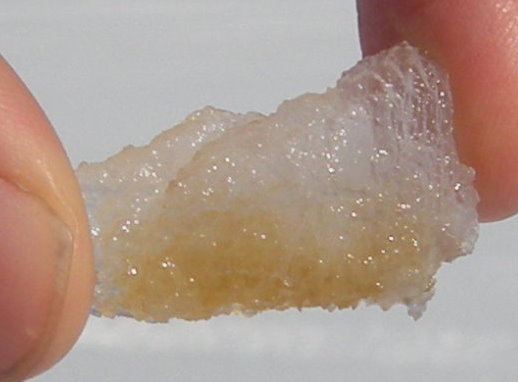
Hard to believe, but in between training sessions and lab set-up, Dawn has been able to have a look at some of the diatoms that Abigail and I brought back from our sea-ice training (see yesterday's blog). On the right is a picture of a piece of ice from one of the holes we drilled when we were determining the thickness of the ice in cracks, and you can see that there is layer of ice discolored with pigment. These are microscopic plankton living in the ice, and for something non-mobile, living in the ice is ideal in some ways. Plankton embedded in the ice are protected from being eaten by krill and other grazing zooplankton, and ice plankton are also at the top of the water column, so they receive maximal sunlight. We transported our samples of ice back to the lab, and Dawn was able to put them under a light microscope with a camera attached and generate this picture:
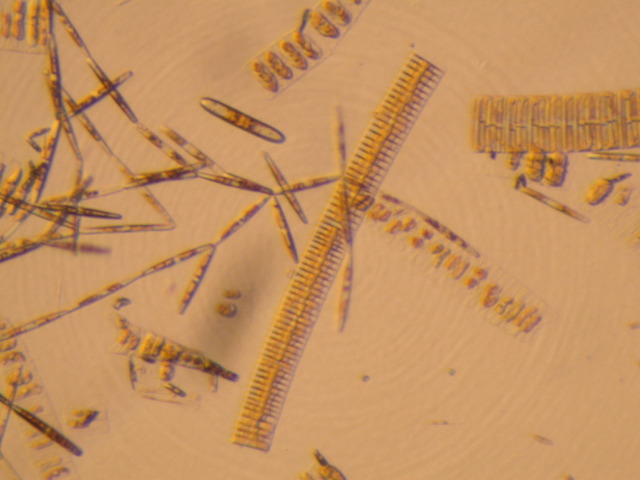
These are all diatoms, and not only could Dawn identify all of them without a guide, she could correctly spell them. Diatoms are glass shelled plankton famous for having some of the most beautiful patterned shapes in the ocean. Diatoms play a vital role in the global carbon cycle, as the they remove large amounts of carbon dioxide from the atmosphere before dying and sinking to the bottom of the ocean. Large blooms of diatoms and other plankton may ultimately help remove much of the greenhouse gasses resulting from fossil fuel use, and is only one of many reasons why we are down here studying them.